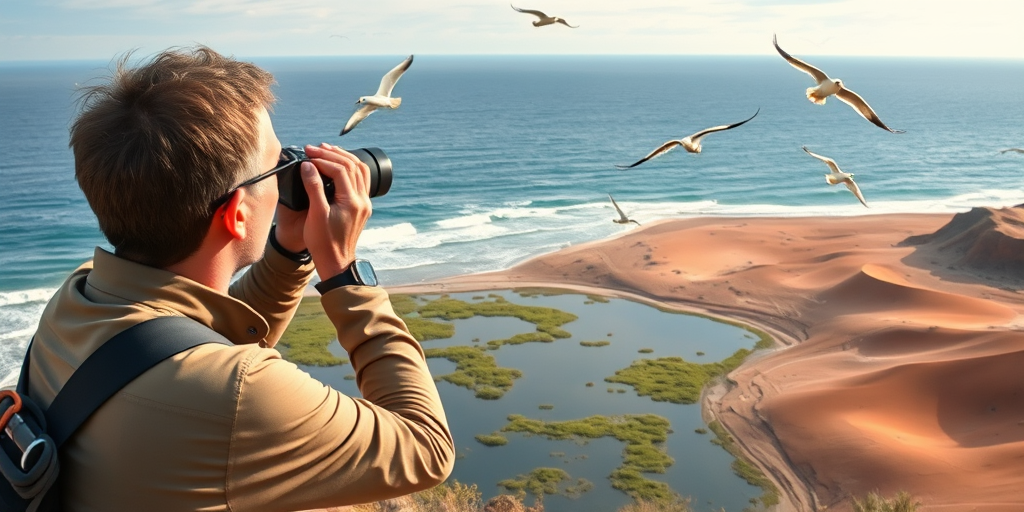Could overlooked birding trails offer more than traditional hotspots? Birdsmania beckons enthusiasts to explore five remarkable routes spanning North America’s dynamic landscapes. With trails in coastal California, expansive Minnesota habitats, and tropical vistas of South Florida, avid observers encounter notable species and seasonal migration patterns seldom seen elsewhere. This article details optimal observation times, distinctive trail features, and practical visitor tips, presenting both scenic enjoyment and technical insights. It challenges conventional birdwatching experiences while inviting readers to gain a fresh perspective on avian exploration.
Iconic Avifauna Routes: Detailed Trail Highlights Across North America
North American birding routes exemplify distinctive features that attract enthusiasts and professionals alike. These trails combine diverse habitats, including coastal cliffs, woodlands, and expansive marshes, with exceptional opportunities to observe a variety of species, from migratory songbirds to tropical visitors and Boreal species. Shared traits such as established observation points, curated visitor centers, and guided field resources contribute to the popularity of these routes. Each trail supports a rich mosaic of environments that collectively offer a robust framework for bird observation across the United States.
A closer look at top trails reveals unique attributes distinguishing each destination. The Colonial Coast Birding Trail in Georgia offers close encounters with coastal bird populations thriving in marine-adjacent reserves, while the Virginia Birding and Wildlife Trail presents wooded areas and estuarine zones that support diverse migratory patterns. The Great Florida Birding Trail provides an expansive network of wetlands and maritime habitats that host tropical avian species and seasonal migrants. Meanwhile, the Pine to Prairie Birding Trail in Minnesota bridges boreal forests with open grasslands, presenting clear vistas for monitoring winter species and transitional migratory groups.
- Colonial Coast Birding Trail – showcases dynamic coastal ecosystems with abundant marine and shorebird species.
- Virginia Birding and Wildlife Trail – integrates forested regions and estuary landscapes ideal for migratory songbirds.
- The Great Florida Birding Trail – encompasses vast wetlands and coastal fields with richly varied tropical birds.
- Pine to Prairie Birding Trail – merges forested and open prairie areas celebrated for Boreal and winter species.
- Creole Nature Trail – features marsh habitats with exceptional opportunities for waterfowl observations.
- Mid-Atlantic Avian Path – highlights wooded and riverine environments prized by eastern migratory species.
- Southwest Desert Vista – offers arid landscapes bolstered by unique desert-adapted bird populations.
The extensive range of these routes affords both novice observers and seasoned enthusiasts varied experiences, encouraging the application of advanced field techniques and analytical observation. Each trail deepens understanding of avian behavior and promotes a refined approach to bird identification, furthering the commitment of the birding community to existing across North America.
Practical Visitor Tips and Safety Considerations on Birding Trails in North America

Preparedness is fundamental when facing diverse trail conditions. Visitors must assemble reliable equipment, such as high-quality binoculars and current field identification guides, to accurately observe and document bird species. Adapting gear selection to dynamic environments reflects an analytical approach to birdwatching that minimizes risks and maximizes observational opportunities.
Adopting precautionary measures is critical when navigating variable environments. Northern trails often experience icy road conditions that demand careful route planning and constant consultation of local weather updates. In regions with high temperatures like South Texas, proper hydration and protective clothing offset the effects of intense heat. Access to visitor centers and engagement with local guides further facilitates safe, informed exploration and accurate species identification through supplementary resources.
Visitors should integrate the following actionable tips during each excursion:
- Weather preparedness: Monitor forecasts and dress for rapid temperature shifts.
- Optimal viewing times: Schedule visits during daylight peaks for enhanced bird activity.
- Local guide assistance: Utilize expertise from local personnel to clarify habitat intricacies.
- Trail etiquette: Maintain low noise levels and abide by established paths to avoid disturbing wildlife.
- Emergency contact awareness: Keep local emergency numbers and assistance details readily available.
Final Words
In the action through diverse birding locations and essential visitor tips, the article outlined vivid trail highlights, seasonal migration details, and practical safety measures. It addressed regional bird habitats, gear advice, and mapping insights which aid careful planning and enriching birding experiences. The discussion weaved expert perspectives with actionable guidance, appealing to both novice and experienced observers. Emphasizing natural beauty alongside tactical advice, the piece inspires renewed enthusiasm for Top Birding Trails in North America, sparking a positive outlook for future outdoor explorations.
FAQ
Q: Where is the best bird watching in North America?
A: The top birding locations include Southeast Arizona’s Sky Islands, Texas’s Rio Grande Valley, and Florida’s Everglades. These areas feature diverse habitats and high species concentrations throughout the year.
Q: What are the 5 S’s of birding?
A: The 5 S’s of birding are Size, Shape, Silhouette, Sound, and Surroundings. These elements help birdwatchers identify and classify different species in the field.
Q: What is the best birding app for North America?
A: Merlin Bird ID by Cornell Lab ranks as the leading North American birding app, offering photo identification, sound recognition, and detailed species information at no cost.
Q: What is the best month for bird watching?
A: May offers peak bird watching opportunities in North America during spring migration. Birds display breeding plumage and increased activity while traveling to summer habitats.
Q: Which birding trails offer the most diverse species?
A: The Great Florida Birding Trail and Southeast Arizona’s Sky Island trails provide exceptional species diversity, featuring both resident and migratory birds across varied ecosystems.
Q: What essential equipment do birders need?
A: Essential birding equipment includes quality binoculars (8×42 recommended), a field guide, weather-appropriate clothing, and a camera for documentation.
Q: How accessible are major birding trails?
A: Most established birding trails feature wheelchair-accessible paths, paved parking areas, and observation platforms. Many include interpretive centers and guided tour options.


